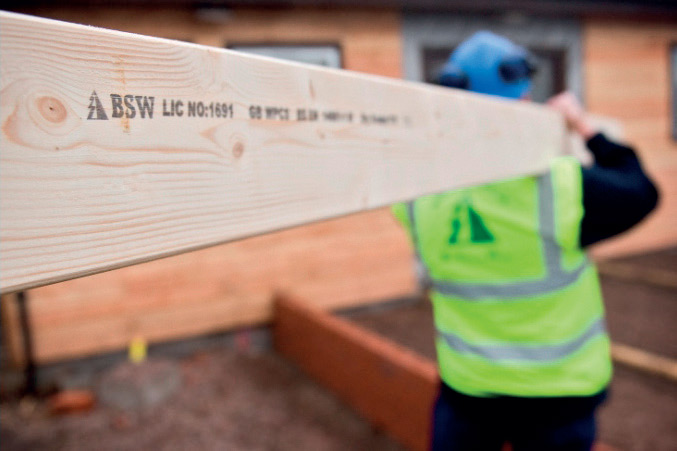Class-Y Stuff, Timber
14 August 2020John Park sets the record straight on strength classes
Let’s get to the crux straight from the outset; C16 and C24 are not strength grades!
How easily incorrectness can slip in to common parlance – I know because I have heard the term used by one who has long been in the timber trade. As is my wont ahead of trotting out these articles I have been having an internet browse and again, because of what I came across, have been diverted from my original topic – wood quality and tree age – which I will get around to in the fullness of time. Indeed, one aspect of wood quality is how it relates to strength and for which, over many years and in many locations, as well you know, strength grading has been variously developed according to local custom and practice. And that is why ‘strength classes’ were devised.
C16 and c24 are strength classes!
Now, there is one quirk in all of this which might just perhaps have caused the confusion in the use of the terminology as the general turn-of-phrase is ‘machine strength grading’ and with ‘machine control’ systems, the method commonly applied throughout Europe, the machines, calibrated according to predetermined settings, ‘grade’ directly to a strength class. Conversely in North America ‘output control’ is the norm producing grades which are defined by strength and stiffness, for example 1650fb-1.5E which when allocated in accordance with the strength class system is C24.
The proliferation of national visual strength grading rules and the resultant plethora of strength grades gave rise to the introduction of strength classes which, whilst it can adversely affect the load carrying capacity of strength grades* it facilitates specification, stocking, selection and supply.
Strength grades are allocated to strength classes. The timber grades, species and sources listed in EN 1912 ‘Structural Timber – Strength classes – Assignment of visual grades and species’, meet the requirements of the strength classes to which they are assigned. The document includes strength classes both for softwoods (C – coniferous) and hardwoods (D – deciduous), lists 178 strength grades of ‘coniferous and poplar species’ (I didn’t trouble to count the hardwoods), identifies botanical species (40) for the commercial names and Annex A lists 14 different national strength grading rules from where those grades originate. All are variously allocated to nine, that’s right, just nine, strength classes. QED!
EN 338 ‘Structural timber – strength classes’, ‘… establishes a system of strength classes for general use in design codes. It gives characteristic strength and stiffness properties and density values for each class to which EN 14081-1 refers’. It explains in the Introduction – ‘A strength class system groups together grades, species and sources with similar strength properties thus making them interchangeable. This then permits an engineer to specify a chosen strength class and use the characteristic strength values of that class in design calculations’.
In EN 338 there are 12 strength classes for softwood, based on edgewise bending tests; the nine included in EN 1912 are: C35; C30; C27; C24; C22; C20; C18; C16; C14. For the complete list, you will need to buy the book. Also in EN 338 are 18 strength classes for softwood based on tension tests and strength classes for hardwoods (14), similarly based on edgewise bending tests.
To take advantage of the optimum structural performance of timber, designers can still use the characteristic values of named grades and species, most useful for example when a widely available higher value strength grade just misses being allocated to the next higher strength class – not quite making it into C35, at C30 that’s effectively a 16% ‘penalty’, which is the downside of the strength class system as I noted, *although not quite correctly, above.
